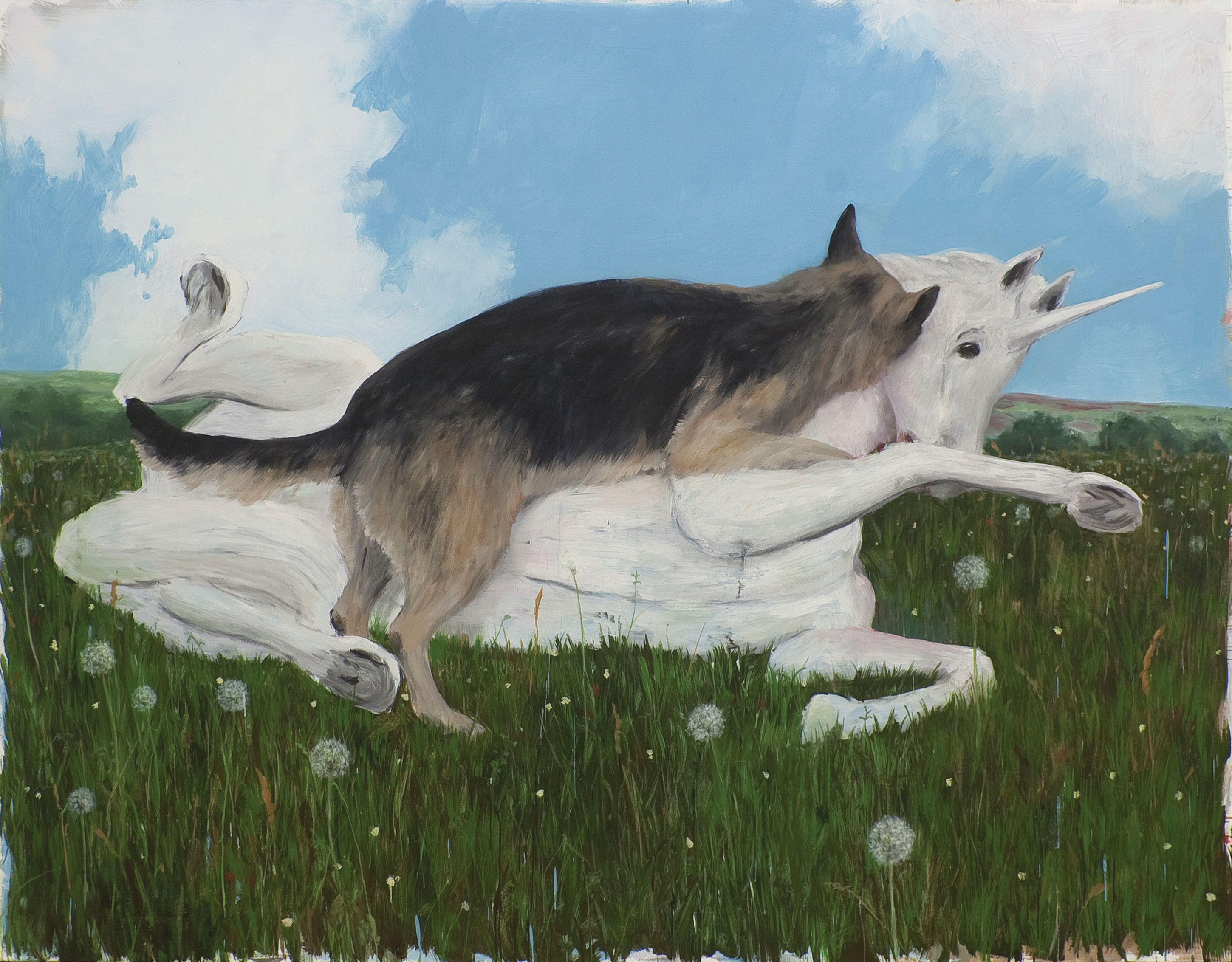Stating that visual art derives from a “poetic impulse” reduces the experience of looking at a particularly seductive or engaging work of art to a passing mystery, some moment of gloriously inexplicable inspiration that is bound to pass. While the work of Enrique Martinez Celaya, who was born in Cuba but spent much of his youth in Spain and Puerto Rico, is luminous, and perhaps even “poetic” in the very best sense of the word, both Celaya’s paintings and sculptures push way beyond the single transformative gesture that poetics all too often suggests, to encompass a territory of staggering complexity.
Celaya’s paintings beg no obvious questions, but instead provide strange and sometimes incongruous vantage points into a universal human narrative. Celaya’s images are illusory, and at times wondrous, and have a distinctly filmic quality like stilled images from a Guillermo del Toro film, wherein the narrative is simultaneously beautiful and haunting, seductive yet terrifying. The One Who Has Taken Its Place (all works 2012) suggests an ecstatic if perilous relationship between reality and the world of dreams—a German shepherd overtaking a terrified unicorn could represent the struggle between the known world and that of imagination. Celaya’s animals don’t function as anthropomorphized stand-ins for humans but instead operate as incontrovertible reminders of the struggle between the conscious and the unconscious mind, between desire and denial, and finally, between reality and imagination. Artists like Marino Marini and Rene Magritte come to mind as influences, as both engaged mythic imagery in the service of the imagination—Marini especially, as he, like Celaya, utilized the horse as a metaphoric symbol of transcendence.
Celaya’s exhibition is filled with dualities. In the painting The Tunnel and The Light (For the Ones Who Hope to Come Out), the darker interior space of the cave, replete with a cluster of dangling and sharply delineated icicles, gives way to a misty field of spring flowers, implying a relationship between the known landscape with the more sacred but brutal topography of the artist’s own interior world. It’s tempting to read this work as an image of rebirth or redemption, yet like the exhibition’s title, “The Hunt’s Will,” Celaya posits the simultaneity of life and death. Perhaps the “hunt,” i.e. the journey through life, is autonomous as though it were a viable and traceable phenomenon that acts upon us and propels us forward.
Other images are more concrete. Celaya’s sculptural work The Enchantment, for instance, creates a visceral relationship and yet another duality between nature and the desire to contain it as a small bronze birdhouse rests wedged between the branches of a low tree. As with Celaya’s paintings, the narrative is fractured, the bird hunted to extinction or simply walled up inside a manmade container. Either way, this work, like poems written by Celan, Martinson and Frost—among Celaya’s favorites—derives its power from the complex relationship between disparate ideas and images, deliberately fragmenting narrative in order that we, as viewers, might lean in closer to glimpse the otherworldly.


